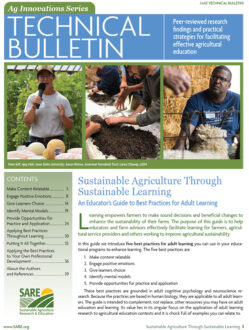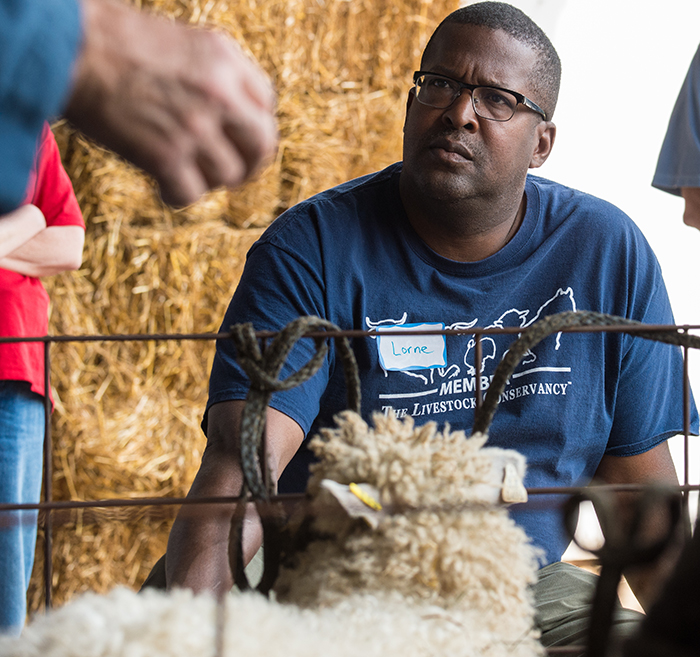
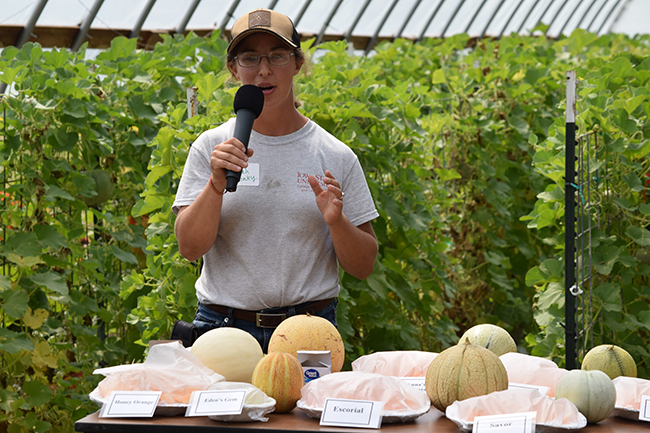
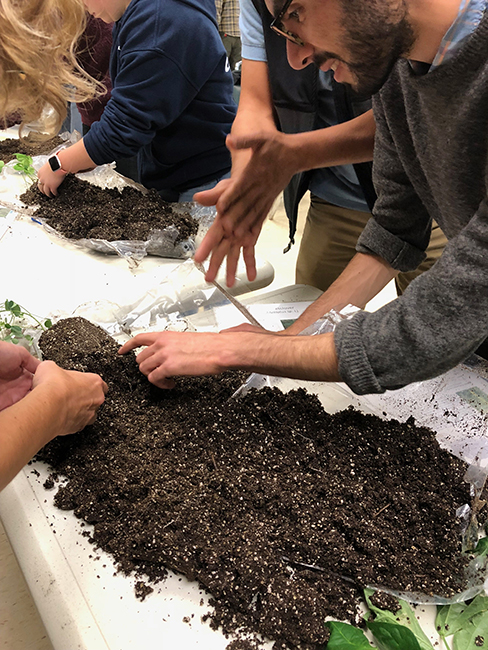
Learning empowers farmers to make sound decisions and beneficial changes to enhance the sustainability of their farms. The purpose of this guide is to help educators and farm advisors effectively facilitate learning for farmers, agricultural service providers and others working to improve agricultural sustainability.
In this guide we introduce five best practices for adult learning you can use to enhance learning in your educational programs. The five best practices are:
- Make content relatable
- Engage positive emotions
- Give learners choice
- Identify mental models
- Provide opportunities for practice and application
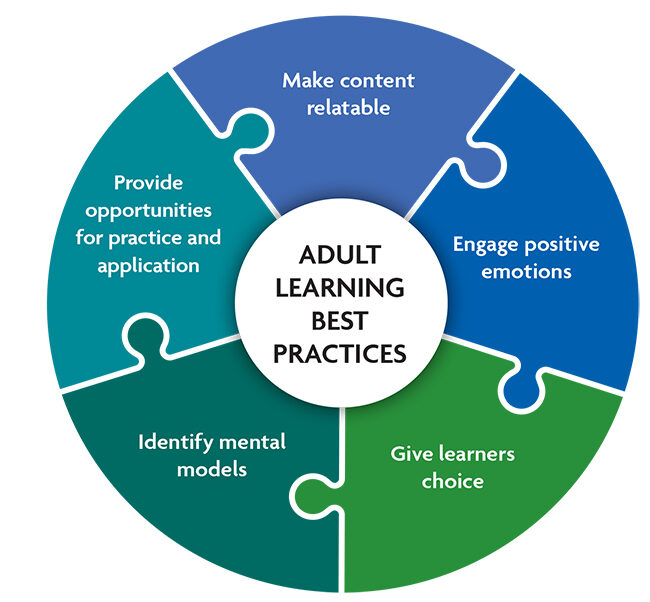
These best practices are grounded in adult cognitive psychology and neuroscience research. Because the practices are based in human biology, they are applicable to all adult learners. The guide is intended to complement, not replace, other resources you may have on adult education and learning. Its value lies in its singular focus on the application of adult learning research to agricultural education contexts, and it is chock full of examples you can relate to.
The examples we use to illustrate applications of the best practices come primarily from Extension educators and specialists in the Northeast SARE region, because most of our experience is based on working with educators from this region. As you read this guide, we encourage you to think about your work and the work of colleagues and to identify your own examples that illustrate these practices in use.
In this guide we describe how and why these practices work, and we share applications across multiple learning contexts, including workshops, on-farm field days, online courses and one-on-one instruction. Employing these best practices can improve both learning outcomes for participants and your satisfaction as an educator. Our hope is that with practice you will become confident in trying new things and that your skills as an educator will continuously grow.
In the following sections we cover each best practice in detail. First, we describe the science behind the practice. This allows you to enhance your curriculum and activities for your setting, to understand why an activity did not turn out as you planned and rework your approach, and to modify your instruction “on the fly” to adapt to unpredictable situations. Then we provide strategies and examples for how to apply the best practice. To wrap up, we provide a set of prompts to help you review the content and reflect on how you can apply it to your own educational contexts. We recommend spending time on these review sections while the content is still fresh in your mind.
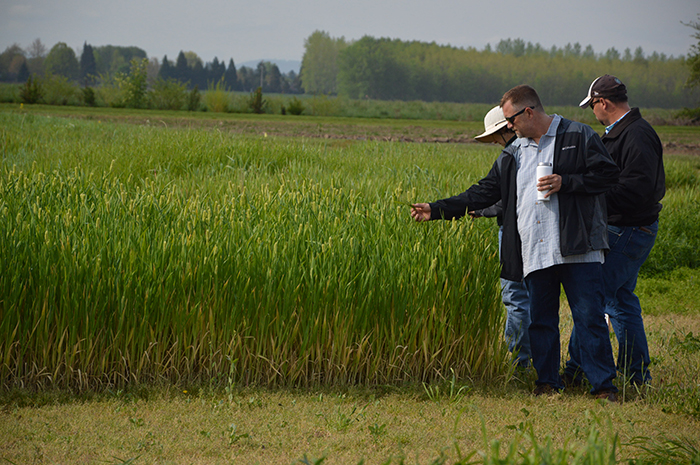
We present the best practices in an order we believe facilitates learning them. However, when you apply the practices you will most likely emphasize some practices over others at different stages of the learning process. And you may use a few practices simultaneously depending on learning goals. Later in this guide, we devote a section to how you can apply the practices before, during and after learning interactions to ensure you are providing optimal support to the adult learners with whom you work.
